 The Universal Serial Bus standard has come a long way since its introduction in 1996. Backed by a consortium of companies led by Intel, Compaq and Microsoft, it offered some unheard-of features for its time, including the ability to connect peripherals without turning off the computer first and to draw power without a separate AC connection. The standard became popular with the arrival of version 1.1 in late 1998, allowing a maximum transfer rate of 12Mb/s, and as we can witness nowadays just about any device comes standard with 'Hi-Speed' USB 2.0 connectivity.
The Universal Serial Bus standard has come a long way since its introduction in 1996. Backed by a consortium of companies led by Intel, Compaq and Microsoft, it offered some unheard-of features for its time, including the ability to connect peripherals without turning off the computer first and to draw power without a separate AC connection. The standard became popular with the arrival of version 1.1 in late 1998, allowing a maximum transfer rate of 12Mb/s, and as we can witness nowadays just about any device comes standard with 'Hi-Speed' USB 2.0 connectivity.Wednesday, December 30, 2009
USB 3.0: What You Need To Know
 The Universal Serial Bus standard has come a long way since its introduction in 1996. Backed by a consortium of companies led by Intel, Compaq and Microsoft, it offered some unheard-of features for its time, including the ability to connect peripherals without turning off the computer first and to draw power without a separate AC connection. The standard became popular with the arrival of version 1.1 in late 1998, allowing a maximum transfer rate of 12Mb/s, and as we can witness nowadays just about any device comes standard with 'Hi-Speed' USB 2.0 connectivity.
The Universal Serial Bus standard has come a long way since its introduction in 1996. Backed by a consortium of companies led by Intel, Compaq and Microsoft, it offered some unheard-of features for its time, including the ability to connect peripherals without turning off the computer first and to draw power without a separate AC connection. The standard became popular with the arrival of version 1.1 in late 1998, allowing a maximum transfer rate of 12Mb/s, and as we can witness nowadays just about any device comes standard with 'Hi-Speed' USB 2.0 connectivity.Wednesday, December 16, 2009
Intel's 6-core Gulftown to debut as Core i7 980X
 PC online has leaked an Intel published slide showing what appears to be the official branding for its upcoming six-core Gulftown processor. Long rumored to be released with the Core i9 identifier, the 32nm Westmere based chip will reportedly debut as the Core i7 980X instead, featuring 3.3GHz clock speeds and a whopping 12MB of L3 cache.
PC online has leaked an Intel published slide showing what appears to be the official branding for its upcoming six-core Gulftown processor. Long rumored to be released with the Core i9 identifier, the 32nm Westmere based chip will reportedly debut as the Core i7 980X instead, featuring 3.3GHz clock speeds and a whopping 12MB of L3 cache. Individual cores will be able to hit up to 3.6GHz thanks to Turbo Boost, while Hyper-Threading support will allow it to juggle 12 threads in total. TDP remains constant at 130W helped by the newer fabrication process. The LGA 1366 chip will be able to drop straight into existing X58 motherboards, following a BIOS update, and should replace the Core i7 975 this March as Intel's flagship desktop product -- at the same $999 price point.
AMD's six-core Thuban processor is expected to hit around the same time as the Core i7 980X. However, in terms of performance, they are expected to compete for a completely different market, perhaps taking on Intel's Lynnfield Core i5 and i7 quad core CPUs.
By Jose Vilches, TechSpot.com
Wednesday, November 18, 2009
ATI Radeon HD 5970 Review: Dual-GPU Graphics
As we discussed in our preliminary Radeon 5870 review, on ATI's horizon ATI was a follow-up to the Radeon HD 4870 X2, code-named "Hemlock XT", which in essence would put together a pair of Radeon HD 5870 GPUs on a single PCB.
Today AMD is officially unveiling the Hemlock as the new ATI Radeon HD 5970, hoping to expand its current dominance in single-GPU performance with the fastest single-slot graphics card on the market -- a title that until today was reserved for Nvidia's dual-GPU GeForce GTX 295.
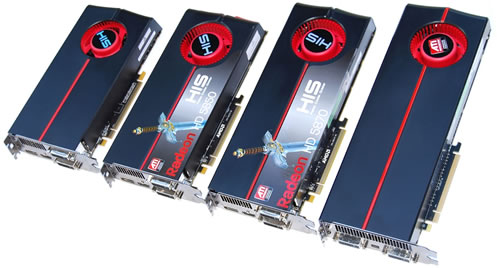
The Radeon HD 5970 looks to be well suited for the job. The GPUs used in this card use exactly the same configuration found on the Radeon HD 5870, while core and memory frequencies match those of the Radeon HD 5850. This provides the HD 5970 with an unmatched memory bandwitch of 256GB/s.
Source: TechSpot
Today AMD is officially unveiling the Hemlock as the new ATI Radeon HD 5970, hoping to expand its current dominance in single-GPU performance with the fastest single-slot graphics card on the market -- a title that until today was reserved for Nvidia's dual-GPU GeForce GTX 295.

The Radeon HD 5970 looks to be well suited for the job. The GPUs used in this card use exactly the same configuration found on the Radeon HD 5870, while core and memory frequencies match those of the Radeon HD 5850. This provides the HD 5970 with an unmatched memory bandwitch of 256GB/s.
Source: TechSpot
Sunday, November 15, 2009
AMD's 2010 - 2011 Roadmaps: ~1B Transistor Llano APU, Bobcat and Bulldozer
It’s got roughly one billion 32nm transistors, fabbed at Globalfoundries. Four CPU cores and a single graphics core. It’s what AMD calls an Accelerated Processing Unit (APU). And we’ll see it in 2011.
Unfortunately that’s a bit late. The APU, codenamed Llano, was originally scheduled for 2010 but got pushed back. In 2009/2010 Intel will be the first to deliver on-chip graphics with Clarkdale/Arrandale, and in late 2010 Sandy Bridge will have on-die graphics.
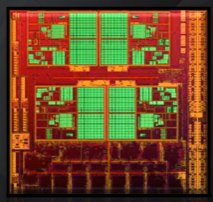
The first die shot of AMD's 32nm Llano APU based on 32nm Phenom II cores
Above is what I believe to be a die shot of AMD’s first APU. The CPU doesn’t use AMD’s next-generation microarchitecture, that’s only for the server and high end in 2011. The first APU will use the existing Phenom II architecture on the same die as DX11 graphics, but at 32nm. Sandy Bridge will use a brand new microprocessor architecture on 32nm but with updated Intel integrated graphics. It looks like Sandy Bridge will have the CPU advantage while Llano might have the GPU advantage, assuming Intel can't get their GPU act together by then. Llano is on schedule to debut in 2011 with OEM sampling happening before the end of the year.
Also on schedule is AMD’s next-generation microarchitecture, codenamed Bulldozer. AMD listed its client PC goals for 2010 at this year’s Financial Analyst Day, one of them is to start sampling its next-generation microprocessor next year - in 2010. If the chip is ready for OEMs by the end of 2010, that means it’ll go on sale as early as 1H 2011.

Unfortunately AMD isn’t talking much about Bulldozer architecture, I suspect we won’t see that disclosure until mid to late 2010. It’s not to keep things secret, we already have many estimates of what Bulldozer’s architecture is going to look like. And if the public already knows, then Intel is also well aware of what AMD has coming in 2011. Updated: AMD has given a high level overview of its Bulldozer and Bobcat architectures here
A major focus is going to be improving on one of AMD’s biggest weaknesses today: heavily threaded performance. Intel addresses it with Hyper Threading, AMD is throwing a bit more hardware at the problem. The dual integer clusters you may have heard of are the route AMD is taking...
Unfortunately that’s a bit late. The APU, codenamed Llano, was originally scheduled for 2010 but got pushed back. In 2009/2010 Intel will be the first to deliver on-chip graphics with Clarkdale/Arrandale, and in late 2010 Sandy Bridge will have on-die graphics.

The first die shot of AMD's 32nm Llano APU based on 32nm Phenom II cores
Also on schedule is AMD’s next-generation microarchitecture, codenamed Bulldozer. AMD listed its client PC goals for 2010 at this year’s Financial Analyst Day, one of them is to start sampling its next-generation microprocessor next year - in 2010. If the chip is ready for OEMs by the end of 2010, that means it’ll go on sale as early as 1H 2011.

A major focus is going to be improving on one of AMD’s biggest weaknesses today: heavily threaded performance. Intel addresses it with Hyper Threading, AMD is throwing a bit more hardware at the problem. The dual integer clusters you may have heard of are the route AMD is taking...
Saturday, November 14, 2009
Radeon HD 5970 detailed in advance
While AMD is gearing up to release it, the Radeon HD 5970 card has made a stealthy appearance online, exposing its likely final specifications. Made by Sapphire, the listed Hemlock card, which is most likely an all-stock product, has two 725 MHz-clocked Cypress 40nm GPUs, each with 1600 Stream Processors, and 2GB of GDDR5 memory set at 4000 MHz, both frequencies being at HD 5850 level.
The dual-GPU, dual-slot card also has a 2x256-bit memory interface, DirectX 11 and CrossFireX support, and dual-DVI outputs plus one mini DisplayPort connector (no HDMI like for the HD 5800 cards). The Radeon HD 5970's pricing and release date are still unconfirmed.
The dual-GPU, dual-slot card also has a 2x256-bit memory interface, DirectX 11 and CrossFireX support, and dual-DVI outputs plus one mini DisplayPort connector (no HDMI like for the HD 5800 cards). The Radeon HD 5970's pricing and release date are still unconfirmed.
Saturday, November 7, 2009
Weekend Open Forum: Have you upgraded to Windows 7 yet? What is there to like/not?
 Inevitably the past few weeks have been a lot about Windows 7. We have contributed our fair share of information and resources in the process, from nifty tips and tricks for those of you coming as far back as the first public beta, to a complete round-up of information to get you up to speed if you are upgrading to Windows 7 just now.
Inevitably the past few weeks have been a lot about Windows 7. We have contributed our fair share of information and resources in the process, from nifty tips and tricks for those of you coming as far back as the first public beta, to a complete round-up of information to get you up to speed if you are upgrading to Windows 7 just now. But what makes Windows 7 different from previous releases? First of all, Windows 7 has proved in a relatively short time span that it’s no dog, and no Vista for that matter. Vista suffered all the incompatibilities and supposedly necessary transition needed to open the path for a next generation OS. In the process, the average PC also became much faster.
Furthermore, consider this… over 90% of PCs worldwide rely on Windows. A big chunk of those computers
are still running XP or even older versions. A majority of businesses didn’t go for Vista and are now showing more willingness to move to 7 eventually, which will also require more modern hardware. Finally, in the consumer end, a majority of the PCs currently running Vista came with the OS pre-installed, and that hardware is more than capable to handle 7, one less obstacle that is showing in preliminary sales statistics for retail boxed versions of the new OS.
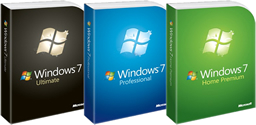
In this edition of our weekend open forum we ask you: Have you upgraded to Windows 7 yet? If yes, what’s your favorite feature so far? If not, what’s keeping you from doing so?
By Julio Franco, TechSpot.com
Latest AV-Comparatives Test (October) Fresh !
This tests focuses only on the malware removal/cleaning capabilities, therefore all used samples were samples that the tested Anti-Virus products were able to detect. It has nothing to do with detection rates or protection capabilities. Of course, if an Anti-Virus is not able to detect the malware, it is also not able to remove it.
The main question was if the products are able to successfully remove malware from an already infected/compromised system. The test report is aimed to normal/typical home users and not Administrators or advanced users that may have the knowledge for advanced/manual malware removal/repair procedures. A further question was if the products are able to remove what they are able to detect.
You can download here
You can download here
Source: AV-Comparatives
Mozilla FireFox 3.5.5 Final
Mozilla Firefox 3.5.5 - Faster, more secure, easier to use and sporting a new look, this latest Firefox release sets a new standard for web browser innovation. Mozilla Firefox project is a redesign of Mozilla’s browser component, written using the XUL user interface language and designed to be cross-platform. It is small, fast and easy to use, and offers many advantages over other web browsers, such as the tabbed browsing and the ability to block pop-up windows.
Download : Download Firefox 3.5.5 Final for Windows
Download : Firefox All Release
Thursday, November 5, 2009
Toshiba announces 320GB 1.8-inch hard drive
 Toshiba has expanded its line of 1.8-inch hard drives today with a new dual-platter model that can hold up to 320GB of data -- a world's first in this form factor. The MK3233GSG features a 3Gbps SATA interface and 16MB cache buffer, produces just 19dB of noise during seeks and spins at 5,400 rpm for a maximum transfer rate of 830Mb/s.
Toshiba has expanded its line of 1.8-inch hard drives today with a new dual-platter model that can hold up to 320GB of data -- a world's first in this form factor. The MK3233GSG features a 3Gbps SATA interface and 16MB cache buffer, produces just 19dB of noise during seeks and spins at 5,400 rpm for a maximum transfer rate of 830Mb/s. The company is positioning its 1.8-inch line as more suitable for portable media devices and thin Laptop than competing 2.5-inch drives. According to Toshiba, the tiny storage devices can handle non-operational shock up to 1,500Gs and operational shock up to 500Gs, marking respective improvements of 50 percent and 25 percent. They also consume 42 percent less power when seeking than the best 5,400rpm 2.5-inch HDDs.
There's still no word on pricing but the company says the new MK3233GSG will go into mass production in December 2009. The drives will also be available in 250GB and 160GB versions.
Wednesday, November 4, 2009
Super Talent announces first USB 3.0 flash drive
Even though Intel is expected to delay USB 3.0 support until sometime in 2011, motherboard makers have gone on their own including the new interconnect in select products via third party controllers. Naturally, compatible devices are starting to make their way onto the market as well, and now Super Talent has announced it plans to start shipping the world's first USB 3.0 flash drives as soon as next month.

Available in 32, 64 and 128GB capacities, the new RAIDDrive USB 3.0 series uses what Super Talent calls “multiple pairs of differential serial data lines technology” for optimal NAND flash performance. We can expect 200MB/s transfer rates in USB 3.0 mode and up to a whopping 320MB/s using a separate UAS Protocol driver. USB 2.0 and even 1.1 port compatibility has been preserved, albeit operating at their respective slower speeds.
To put this into perspective, filling up Super Talent's 64GB USB 3.0 flash drive would take a little over 3 minutes at top speed, whereas the same task would take nearly 30 minutes over a USB 2.0 port. There's still no word on pricing, but the company says we can expect retail availability in December from resellers worldwide.

Available in 32, 64 and 128GB capacities, the new RAIDDrive USB 3.0 series uses what Super Talent calls “multiple pairs of differential serial data lines technology” for optimal NAND flash performance. We can expect 200MB/s transfer rates in USB 3.0 mode and up to a whopping 320MB/s using a separate UAS Protocol driver. USB 2.0 and even 1.1 port compatibility has been preserved, albeit operating at their respective slower speeds.
To put this into perspective, filling up Super Talent's 64GB USB 3.0 flash drive would take a little over 3 minutes at top speed, whereas the same task would take nearly 30 minutes over a USB 2.0 port. There's still no word on pricing, but the company says we can expect retail availability in December from resellers worldwide.
Tuesday, November 3, 2009
Kingston, Paramount to deliver movies on flash drives
Kingston has signed an agreement with Paramount Digital Entertainment to deliver full-length motion picture films on flash devices. The movies will be stored on Kingston's SD and USB flash memory products, and will be available to consumers for a reasonable price -- all things considered. To boot, the companies are offering Transformers: Revenge of the Fallen on a 4GB Kingston DataTraveler USB drive for $29.99
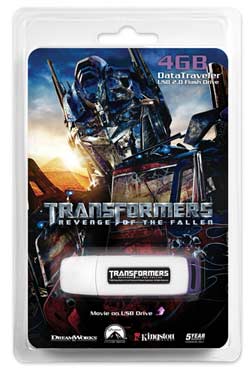
Assuming the flash drive is reusable, that's not too bad of a deal for $30. That said, being crammed on a 4GB drive naturally means that the films will be in standard definition -- a deal breaker for many, I'm sure. Perhaps HD-friendly films will be offered on larger drives at a later date, but there are few details about the companies' future plans.
It seems to me that the people who would be most interested in this offer, probably already own a Blu-ray player. Would you pay $30 for a film stored on flash memory?

Assuming the flash drive is reusable, that's not too bad of a deal for $30. That said, being crammed on a 4GB drive naturally means that the films will be in standard definition -- a deal breaker for many, I'm sure. Perhaps HD-friendly films will be offered on larger drives at a later date, but there are few details about the companies' future plans.
It seems to me that the people who would be most interested in this offer, probably already own a Blu-ray player. Would you pay $30 for a film stored on flash memory?
VIA intros Nano 3000 Series processors
VIA has announced its new Nano 3000 Series processors, which are said to offer enhanced digital media performance and less power consumption for ultrathin notebooks and all-in-one desktops. The new line brings strong competition to Intel's Atom CPU, and consists of six 64-bit Isaiah-based chips.
and all-in-one desktops. The new line brings strong competition to Intel's Atom CPU, and consists of six 64-bit Isaiah-based chips.
VIA's Nano 3000 processors are clocked between 1GHz and 2GHz with an 800MHz FSB, and feature SSE4 instructions, hardware virtualization, and Windows 7 and Linux compatibility. Along with being 20% more power efficient than current-gen Nano processors, they are also said to be capable of delivering 20% more performance, and are able to play 1080p video.
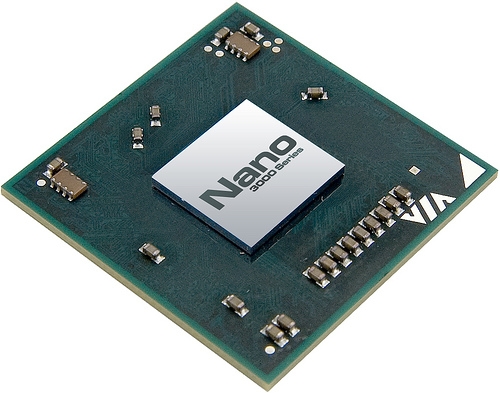

VIA's Nano 3000 processors are clocked between 1GHz and 2GHz with an 800MHz FSB, and feature SSE4 instructions, hardware virtualization, and Windows 7 and Linux compatibility. Along with being 20% more power efficient than current-gen Nano processors, they are also said to be capable of delivering 20% more performance, and are able to play 1080p video.

| Product Name | Speed | VIA V4 FSB | Idle Power | ||
| L3100 | 2.0GHz | 800MHz | 500mW | ||
| L3050 | 1.8GHz | 800MHz | 500mW | ||
| U3200 | 1.4GHz | 800MHz | 100mW | ||
| U3100 | 1.3+GHz | 800MHz | 100mW | ||
| U3300 | 1.2GHz | 800MHz | 100mW | ||
| U3500 | 1.0GHz | 800MHz | 100mW |
Maingear unveils enthusiast-oriented SHIFT desktop PC
Maingear has unveiled the SHIFT desktop PC, which is aimed at the high-end enthusiast market. Referring to the SHIFT as an "everyday supercomputer," the company says it will "reshape the current landscape of high performance computing" -- a bold claim if I ever saw one.
Externally, the SHIFT shows a clean-cut aluminum chassis, which lacks the excessive lighting of other gaming systems. Inside is a vertical airflow system that vents air through the top of the case, and the system can be based on Intel's P55 or X58 platforms.
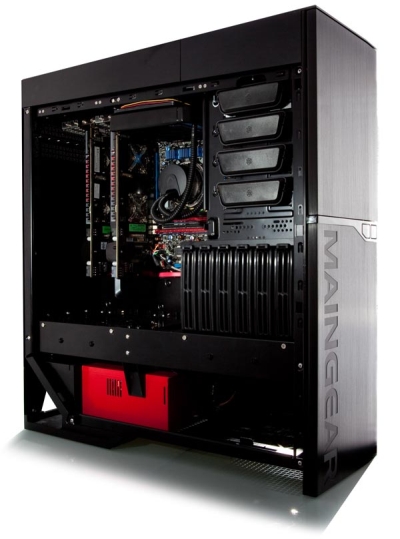
The base P55 configuration starts at $2,199 and the X58 rig costs $400 more. Out of sheer curiosity, I maxed out the X58 system at just under 19 grand before shipping.
Externally, the SHIFT shows a clean-cut aluminum chassis, which lacks the excessive lighting of other gaming systems. Inside is a vertical airflow system that vents air through the top of the case, and the system can be based on Intel's P55 or X58 platforms.

The base P55 configuration starts at $2,199 and the X58 rig costs $400 more. Out of sheer curiosity, I maxed out the X58 system at just under 19 grand before shipping.
Saturday, October 31, 2009
10 Essential Windows 7 Downloads
Windows 7 may be brand spanking new, but that doesn't mean you can't find free or cheap tools to tweak its settings, add features, or smooth an upgrade from XP or Vista.We've compiled a list of ten valuable software tools -- many of them free -- that can make your Win7 experience a lot more rewarding.
(Click on each of the images for a closer look at the tool.)
Microsoft Security Essentials
 Windows 7, like its predecessors, doesn't provide built-in protection against malware such as viruses and spyware. (It does have a firewall, however.) You could pay McAfee or Symantec for this service, but why bother with their protection racket when Redmond's does the same thing for free? Microsoft Security Essentials provides solid protection for home PCs, and it's gratis. If you prefer third-party security, check out AVG Anti-Virus Free Edition instead.
Windows 7, like its predecessors, doesn't provide built-in protection against malware such as viruses and spyware. (It does have a firewall, however.) You could pay McAfee or Symantec for this service, but why bother with their protection racket when Redmond's does the same thing for free? Microsoft Security Essentials provides solid protection for home PCs, and it's gratis. If you prefer third-party security, check out AVG Anti-Virus Free Edition instead.
Ninite
(Click on each of the images for a closer look at the tool.)
Microsoft Security Essentials
 Windows 7, like its predecessors, doesn't provide built-in protection against malware such as viruses and spyware. (It does have a firewall, however.) You could pay McAfee or Symantec for this service, but why bother with their protection racket when Redmond's does the same thing for free? Microsoft Security Essentials provides solid protection for home PCs, and it's gratis. If you prefer third-party security, check out AVG Anti-Virus Free Edition instead.
Windows 7, like its predecessors, doesn't provide built-in protection against malware such as viruses and spyware. (It does have a firewall, however.) You could pay McAfee or Symantec for this service, but why bother with their protection racket when Redmond's does the same thing for free? Microsoft Security Essentials provides solid protection for home PCs, and it's gratis. If you prefer third-party security, check out AVG Anti-Virus Free Edition instead.Ninite
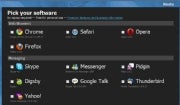 Brave souls upgrading to Windows 7 from XP must do a clean install, a tedious process that includes, among other things, reinstalling all of your apps. Why not load most of your free and open source programs all at once? Ninite does just that. First, go to the Ninite site and pick the programs you want (e.g., Firefox, iTunes, and Skype). Next, download Ninite, which installs the apps on your PC without additional crapware. Ninite is free for personal use.
Brave souls upgrading to Windows 7 from XP must do a clean install, a tedious process that includes, among other things, reinstalling all of your apps. Why not load most of your free and open source programs all at once? Ninite does just that. First, go to the Ninite site and pick the programs you want (e.g., Firefox, iTunes, and Skype). Next, download Ninite, which installs the apps on your PC without additional crapware. Ninite is free for personal use.Windows Live Photo Gallery
 To keep Windows 7 slim and trim -- and avoid the code bloat that slowed Vista -- Microsoft left a few utilities out of its new OS.
To keep Windows 7 slim and trim -- and avoid the code bloat that slowed Vista -- Microsoft left a few utilities out of its new OS.One such app, Photo Gallery, is a free, easy to use photo manager/editor that's worth a download, particularly if you're not already using Google Picasa to organize your pics and videos.
Windows Easy Transfer
Anyone moving to Windows 7 from XP and Vista should check out this free download, which helps you copy files and settings from one PC to another. (Windows 7 comes with Easy Transfer.)
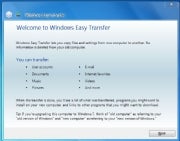 The new version of Easy Transfer adds a file explorer, which simplifies the task of selecting the exact files you want to copy. Easy Transfer won't hang if it comes across a file or setting it can't move. Rather, it'll complete the transfer and provide a report of everything it couldn't copy. The bad news: Easy Transfer won't copy your programs. For a PC-to-PC connection, you'll need an Easy Transfer Cable (about $20). Other transfer options include a USB flash drive, external hard disk, or network connection.
The new version of Easy Transfer adds a file explorer, which simplifies the task of selecting the exact files you want to copy. Easy Transfer won't hang if it comes across a file or setting it can't move. Rather, it'll complete the transfer and provide a report of everything it couldn't copy. The bad news: Easy Transfer won't copy your programs. For a PC-to-PC connection, you'll need an Easy Transfer Cable (about $20). Other transfer options include a USB flash drive, external hard disk, or network connection.Ultimate Windows Tweaker v2
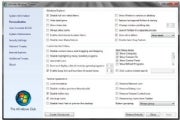 This free customization tool detects whether you're running Windows 7 or Vista, and offers only those tweaks that are relevant to your OS. "Ultimate" is a fitting description for this mega-tweaker, which provide dozens of configuration options for UI, network, security, and system settings. If you're all about personalizing Windows 7, this app's for you.
This free customization tool detects whether you're running Windows 7 or Vista, and offers only those tweaks that are relevant to your OS. "Ultimate" is a fitting description for this mega-tweaker, which provide dozens of configuration options for UI, network, security, and system settings. If you're all about personalizing Windows 7, this app's for you.WinZip 14 Standard
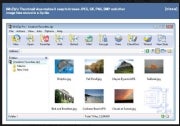 So you're about to ask: If Windows 7 has zip compression built in, why do I need the latest version of WinZip? Well, if you seldom use zip archives, you probably don't. But zip fans will appreciate the improvements in WinZip 14 Standard, which has simplified the process of zipping and mailing archives in Win 7.
So you're about to ask: If Windows 7 has zip compression built in, why do I need the latest version of WinZip? Well, if you seldom use zip archives, you probably don't. But zip fans will appreciate the improvements in WinZip 14 Standard, which has simplified the process of zipping and mailing archives in Win 7.The latest version offers better compression ratios too. WinZip 14 Standard costs $30.
EnhanceMySe7en Free
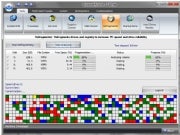 Windows 7 may be easier to use than Vista or XP, but diagnostic and maintenance chores can still be tricky. EnhanceMySe7en is a handy utility for anyone doing a little system housekeeping.
Windows 7 may be easier to use than Vista or XP, but diagnostic and maintenance chores can still be tricky. EnhanceMySe7en is a handy utility for anyone doing a little system housekeeping.This free app makes it easier to select which programs will load when Windows starts, monitor your hard drives' performance, "health," and temperature, and fiddle with the Registry -- if you dare.
Image Resizer Powertoy Clone
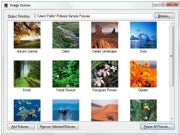 Need to resize pictures in Windows 7? This free utility makes it easy -- simply right-click one or more image files in Windows Explorer. You can select one of four sizes: small (640 by 480); medium (800 by 600); large (1024 by 768); or handheld PC (240 by 320). You can create your own custom sizes too.
Need to resize pictures in Windows 7? This free utility makes it easy -- simply right-click one or more image files in Windows Explorer. You can select one of four sizes: small (640 by 480); medium (800 by 600); large (1024 by 768); or handheld PC (240 by 320). You can create your own custom sizes too.Systerac Tools for Windows 7
 This bundle of 16 tools from Systerac has everything you'll need to keep Windows 7 running smoothly. You can tweak Windows' performance and appearance, optimize memory, clean up the hard drive, cover your tracks by shredding files, and so on. The Systerac interface is aesthetically appealing, nicely organized, and easy to learn. The $20 Windows 7 version runs on Vista too.
This bundle of 16 tools from Systerac has everything you'll need to keep Windows 7 running smoothly. You can tweak Windows' performance and appearance, optimize memory, clean up the hard drive, cover your tracks by shredding files, and so on. The Systerac interface is aesthetically appealing, nicely organized, and easy to learn. The $20 Windows 7 version runs on Vista too.Windows 7 Upgrade Advisor
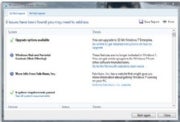 Don't upgrade to Windows 7 before running this free utility from Microsoft. Upgrade Advisor scans your PC to see if it's ready for Win 7. If it detects any potential problems, including insufficient memory, incompatible hardware, or outdated software, it'll let you know in a brief summary report.
Don't upgrade to Windows 7 before running this free utility from Microsoft. Upgrade Advisor scans your PC to see if it's ready for Win 7. If it detects any potential problems, including insufficient memory, incompatible hardware, or outdated software, it'll let you know in a brief summary report.Free Tune Up Utilities 2010
 TuneUp Utilities is a program that can help us to make our windows operating system more quickly, comfortably and safely conduct with only a few clicks only. And all the commands that we give our windows operating system, completely secure. Because, all the changes that we do are always monitored by TuneUp Rescue Center and can be canceled at any time.
TuneUp Utilities is a program that can help us to make our windows operating system more quickly, comfortably and safely conduct with only a few clicks only. And all the commands that we give our windows operating system, completely secure. Because, all the changes that we do are always monitored by TuneUp Rescue Center and can be canceled at any time. The program will also provide more choices to us. Besides can make Windows a more attractive, BY USING theme. TuneUp Utilities to clean up useless data from your hard disk and also Deleting entries from the registry useless. Not only that, TuneUp Utilities able to defragment your hard disk and registry and system settings Optimizing us to make Windows Walk faster. Most of this maintenance can be performed automatically every week by TuneUp 1-Click Maintenance.
You Can Download It HERE
DirectX11 Released For Windows Vista
For those of you sticking with Vista, Microsoft has finally officially released DirectX 11 for Vista, after having spent the last couple of months in beta. This final release looks to be the same as the last beta released earlier this month.
The update is KB971512, which is being released as part of a larger Platform Update for Vista that includes a few other things that are being backported for Vista. Vista SP2 is the prerequisite, so if you aren’t already on SP2 you’ll need to update.
The update is KB971512, which is being released as part of a larger Platform Update for Vista that includes a few other things that are being backported for Vista. Vista SP2 is the prerequisite, so if you aren’t already on SP2 you’ll need to update.
Friday, October 30, 2009
Google Chrome: The Fast Browser With Slow Adoption
 The launch of Google's Chrome browser a little over a year ago brought with it a mountain of hype and expectations, with some suggesting it could be as instantly disruptive and beneficial as Gmail was to the webmail market.
The launch of Google's Chrome browser a little over a year ago brought with it a mountain of hype and expectations, with some suggesting it could be as instantly disruptive and beneficial as Gmail was to the webmail market.After all, here was Google opening another front against Microsoft with a big and bold move, and also turning into a competitor to its close partner Mozilla, maker of Firefox, the darling browser of techies worldwide.
Positioning itself as a reluctant entrant to the market, Google stated dramatically that it had no other choice given its deep dissatisfaction with existing browsers, specifically with their speed and performance running Web applications.
TSMC 40nm yield issues to affect AMD and Nvidia
 Taiwan Semiconductor Manufacturing Company (TSMC), the world's largest dedicated independent semiconductor foundry, recently confirmed it has run into new issues with their 40nm process technology that have sent yield rates down to 40%. Major customers for TSMC's 40nm processes include AMD, which just released its Radeon HD 5000 series, and Nvidia, who is expected to launch the GT300 series in December.
Taiwan Semiconductor Manufacturing Company (TSMC), the world's largest dedicated independent semiconductor foundry, recently confirmed it has run into new issues with their 40nm process technology that have sent yield rates down to 40%. Major customers for TSMC's 40nm processes include AMD, which just released its Radeon HD 5000 series, and Nvidia, who is expected to launch the GT300 series in December. On first thought the conspiracy theorist in me found this suspiciously untimely for AMD, which for the first time in a long while had a great opportunity to capitalize on its early-to-market status. Their latest 40nm-based cards are not only the first to support DirectX 11, with Nvidia's answer arriving a few months later, but they have also been getting high marks for their performance and feature set in reviews around the web.
Then again TSMC's recent issues will reportedly impact shipping schedules for both AMD and Nvidia -- not to mention the manufacturer's financial performance. Company chairman and CEO Morris Chang pledged to get the problem fixed during the current quarter. The company had previously improved yield rates for its 40nm processes to around 60% from as low as 20-30% in the second quarter of 2009.
By Jose Vilches, TechSpot.com
Thursday, October 29, 2009
Kaspersky tool detects malware in Twitter links
 Kaspersky unveiled a new tool on Thursday called "Krab Krawler" that analyzes the millions of tweets posted on Twitter every day and blocks any malware associated with them.
Kaspersky unveiled a new tool on Thursday called "Krab Krawler" that analyzes the millions of tweets posted on Twitter every day and blocks any malware associated with them.The tool looks at every public post as it appears on Twitter, extracts any URLs in them and analyzes the Web page they lead to, expanding any URLS that have been shortened, Costin Raiu, a senior malware analyst at Kaspersky, said in an interview.
The company is scanning nearly 500,000 new unique URLs that appear in Twitter posts daily, he said. Of those, anywhere between 100 and 1,000 are malware attacks. Twitter has also been targeted by the Koobface virus which posts malicious links from infected users' accounts.
About 26 percent of the total posts contain URLs, and many of those lead to spam sites that are marketing products or services and aren't considered malware, according to Raiu. Tens of thousands of different accounts are posting spam links, most likely from accounts created by bots, he said. The most frequent URLs posted lead to online dating sites, he added.
Twitter has its own filtering system, but some malicious links still manage to get through, Raiu said.
While Kaspersky's regular antivirus software may detect and block 95 percent of the malware Twitter users are threatened with, malware code changes frequently to evade filters and it could take between two and 12 hours for new stuff to be classified as malicious and detected, he said.
While antivirus companies have traditionally focused on protecting e-mail-borne viruses, they are increasingly turning their attention to social-media sites as attackers do.
Trend Micro has technology that monitors Twitter posts for malicious URLs, as well as looks for attack patterns in the posts, such as use of popular terms to indirectly lead people to malicious links, said Morton Swimmer, a senior threat researcher at Trend Micro.
Meanwhile, Finjan offers a free browser plug-in dubbed SecureTwitter that warns users when they encounter a malicious URL in Twitter, as well as Gmail, Blogger, MSN, MySpace, Google search, Yahoo, and other sites.
Social-media sites are popular for attackers not only because people are flocking to them, but also because users seem to trust messages that appear to come from friends on those sites more than they trust e-mails, Raiu said.
"People are worried about unsolicited e-mail, so they are careful not to run the programs they get by e-mail, but they aren't prepared to deal with these kinds of new attacks," he said.
The most common piece of malware associated with Twitter links is Trojan-Clicker.HTMLIFrame, a malicious JavaScript that can get downloaded to a computer when it visits a compromised Web site.
(Credit: Kaspersky)Source: Cnet
Intel to update LGA1366 line with 2.88GHz Core i7 930
 Even though Intel is facing virtually no competition on the high-end processor market, the arrival of its Lynnfield-based Core i7 860 early last month threatened to cannibalize sales at the lower end of the enthusiast LGA1366 spectrum. The chip carries the same $290 price tag as the "Bloomfield" Core i7 920, yet it comes with higher clock speeds and Turbo Boost capabilities, a tighter power envelope, and fits into a cheaper platform.
Even though Intel is facing virtually no competition on the high-end processor market, the arrival of its Lynnfield-based Core i7 860 early last month threatened to cannibalize sales at the lower end of the enthusiast LGA1366 spectrum. The chip carries the same $290 price tag as the "Bloomfield" Core i7 920, yet it comes with higher clock speeds and Turbo Boost capabilities, a tighter power envelope, and fits into a cheaper platform. Thus is not really surprising to hear Intel will be discontinuing the latter. However, rather than leaving a wide hole in its LGA1366 lineup, the chip maker will apparently be replacing it with a higher clocked Core i7 930 processor next quarter. The quad-core, eight thread part will run at 2.88GHz and should cost the same as its Core i7 920 predecessor.
Although still unconfirmed by Intel at this point, the move sounds plausible enough. We have already witnessed the replacement of the 3.20GHz Core i7 Extreme 965 with the 3.33GHz i7 975, as well as the 2.93GHz Core i7 940 with the 3.06GHz Core i7 950 and once again with the Core i7 960 running at 3.2GHz.
By Jose Vilches, TechSpot.com
Sony Recalls AC Adapters For Shock Hazard
Check yourself before you wreck yourself.

While Sony may have figured out its laptop battery technology, there is now an unfortunate case for the recall of some of the company's AC adapters that pose a shock hazard to its users.
Owners of the AC adapter model VGP-AC19V17, used on the Vaio all-in-one desktop models VGC-LT series and VGC-JS2 series and the Docking Stations VGP-PRBX1 and VGP-PRFE1, are subject to the voluntary recall by Sony. The defect affects around 69,000 units.
Sony has received four reports of adapters short circuiting, but thankfully, no injuries have been reported.
Those who own products that use this AC adapter are advised to turn off their computer, unplug it, and contact Sony to arrange for a free replacement.
Read the full details of the recall here.
Source : Tom's Hardware US

While Sony may have figured out its laptop battery technology, there is now an unfortunate case for the recall of some of the company's AC adapters that pose a shock hazard to its users.
Owners of the AC adapter model VGP-AC19V17, used on the Vaio all-in-one desktop models VGC-LT series and VGC-JS2 series and the Docking Stations VGP-PRBX1 and VGP-PRFE1, are subject to the voluntary recall by Sony. The defect affects around 69,000 units.
Sony has received four reports of adapters short circuiting, but thankfully, no injuries have been reported.
Those who own products that use this AC adapter are advised to turn off their computer, unplug it, and contact Sony to arrange for a free replacement.
Read the full details of the recall here.
Source : Tom's Hardware US
Microsoft puts its 'signature' on PCs
The "Microsoft Signature" PCs that are being sold at Microsoft's retail and online stores contain a bunch of extra Windows Live software, but also feature something rarely found on a PC--a clean desktop.
(Credit: Microsoft) In its new role as PC retailer, Microsoft is loading computers with what it's calling its Microsoft Signature experience--a collection of Microsoft products, including the complete Windows Live suite, Security Essentials antivirus product, Zune jukebox, and Bing 3D Maps software, as well as Adobe's Flash and Acrobat Reader products. Internet Explorer 8 is the browser, with Bing as its default search provider.
 (Credit: Graphic by Ina Fried/CNET News)
(Credit: Graphic by Ina Fried/CNET News) The goal of the Signature effort is to give customers what Microsoft feels is the best software experience they can have on a PC.
"Signature gives them a PC that is ready to run," Microsoft retail unit chief technology strategist Kevin Eagan said in an interview. "We think we're really unlocking the potential of Windows 7."
Microsoft isn't completely deciding what goes on the system. Computer makers can also add software that takes advantage of particular hardware features, but it's not allowing any trialware or "crapware."
"Much like other retailers would define (what goes on their PCs), we do the same working closely with our (computer maker) partners," Eagan said.
As part of the in-store experience, Microsoft staffers will also help customers install other software they might want--even competitor's products, such as Apple's iTunes. They can also change their browser or default search provider before they leave the store, Eagan said.
"We want to give customers what they are asking for, so they leave store 100 percent satisfied," Eagan said.
Eagan said Microsoft is just taking advantage of the customization options that other retailers also have available to them and said the company doesn't anticipate any regulatory concerns.
"We're absolutely confident that what we've done is added another choice for customers," he said. "We think expanded choice is good for customers."
Those who already have a PC, but live near one of Microsoft's stores, can bring in their PC and have the Microsoft Security Essentials software added at no charge.
Source: Cnet
Wednesday, October 28, 2009
Gigabyte intros next-gen USB and SATA-equipped motherboards
Gigabyte has joined Asus in the race to build motherboards equipped with USB 3.0 and SATA 6Gb/s connectivity, introducing an entire P55-based lineup sporting the next-generation I/O technology. The company has brought a host of new motherboards to the table, including the GA-P55A-UD6, GA-P55A-UD5, GA-P55A-UD4P, GA-P55A-UD4,GA-P55A-UD3P, GA-P55A-UD3R, GA-P55A-UD3.
This series of boards can be easily distinguished by the "P55A" branding, as opposed to the company's previous "P55" boards -- they also feature "Gigabyte 333 onboard acceleration." The "333" refers to the onboard third-gen SATA and USB parts, as well as USB 3.0's new voltage profile, which Gigabyte says offers triple the power to external devices.
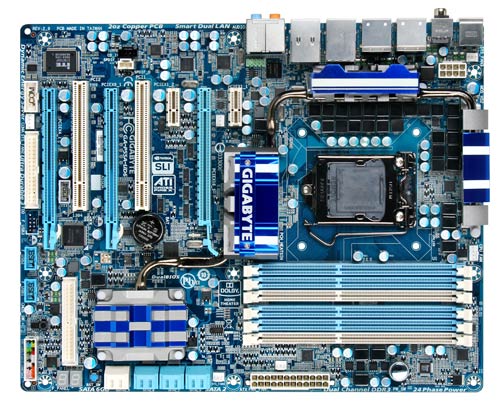
By Matthew DeCarlo, TechSpot.com
This series of boards can be easily distinguished by the "P55A" branding, as opposed to the company's previous "P55" boards -- they also feature "Gigabyte 333 onboard acceleration." The "333" refers to the onboard third-gen SATA and USB parts, as well as USB 3.0's new voltage profile, which Gigabyte says offers triple the power to external devices.

By Matthew DeCarlo, TechSpot.com
Tuesday, October 27, 2009
Tilera touts 100-core server processor
 Looking to make its way into a market dominated by Intel and AMD, Tilera Corporation, a five-year-old fabless semiconductor startup focusing on scalable multi-core embedded processor design has unveiled the new Tile-GX series of server CPUs. Available with 16, 36, 64, and up to 100 cores, the company claims its chips offer the highest performance of any microprocessor yet announced while operating efficiently at the same time.
Looking to make its way into a market dominated by Intel and AMD, Tilera Corporation, a five-year-old fabless semiconductor startup focusing on scalable multi-core embedded processor design has unveiled the new Tile-GX series of server CPUs. Available with 16, 36, 64, and up to 100 cores, the company claims its chips offer the highest performance of any microprocessor yet announced while operating efficiently at the same time. They are built on TSMC's 40 nanometer process and can work at up to 1.50GHz with power consumption ranging from 10 to 55 watts. While this may seem like no match for Intel’s Nehalem processors which top out at around 3.3GHz (and burn up to 130 watts), Tilera's view is to increase performance by having many cores running at modest clock speeds rather than just driving up clock frequency.
The new Tile-GX series is based around a two-dimensional iMesh interconnect, which eliminates the need for an on-chip bus, and a Dynamic Distributed Cache system that allows each core's local cache to be shared coherently across the entire chip. According to the firm, this interconnect system is able to feed data into the chip's cores at very high rates of speed so performance can scale almost linearly with the number of cores.
Both Intel and AMD are also working on growing the number of cores on their processors and expanding the reach of their architectures, but Tilera claims to have a clear advantage in performance-per watt. Of course, they'll face an uphill battle competing with established players and the huge codebase behind their x86 architecture, but Tilera claims some top-tier system makers have already shown interest in their products and at least one is running their multi-core chips on test systems.
By Jose Vilches, TechSpot.com
Intel to allow 2GB RAM with future Atom N470 netbooks
 If you've been in the market for a netbook at any given moment for the past year, you may have noticed how manufacturers are basically just putting different enclosures around the same hardware -- 1.6GHz Intel Atom N270 processor, 160 or 250GB hard drives, and no more than 1GB of RAM. This is largely the result of restrictions set by Intel and Microsoft, and apparently with the arrival of Intel's Pine Trail platform early next year things won't be too different.
If you've been in the market for a netbook at any given moment for the past year, you may have noticed how manufacturers are basically just putting different enclosures around the same hardware -- 1.6GHz Intel Atom N270 processor, 160 or 250GB hard drives, and no more than 1GB of RAM. This is largely the result of restrictions set by Intel and Microsoft, and apparently with the arrival of Intel's Pine Trail platform early next year things won't be too different. According to Fudzilla, netbooks based on the upcoming 1.66GHz Atom N450 processor, which will debut in January featuring an on-die graphics core and memory controller, will still be tied to the 1GB limit. These systems should also have display sizes ranging from 7" to 10.2", either a 120GB hard drive or up to 20GB of solid-state storage, and a four-cell battery -- but on the flip side should start selling for as low as $250.
Further down the road, around March 2010, the 1.83GHz Atom N470 will reportedly allow running 2GB of RAM and up to 32GB of solid-state storage. The higher limit should provide a decent jump in performance for netbooks, while still targeting the $299 to $349 price points.
These restrictions are aimed at making a clear distinction between netbooks and ultraportables, while protecting the profit margins from more lucrative CULV-based offerings.
By Jose Vilches, TechSpot.com
Clean install Windows 7 using upgrade media
 There are two license types for Windows 7: the full package product license and the upgrade license. While Microsoft is giving both XP and Vista users the option to buy the latter, for considerably less money, it also has some restrictions in place that make it difficult to perform a clean install using upgrade media. Specifically, the Windows 7 installer must be ran from either XP or Vista and detect an active, registered version of the OS.
There are two license types for Windows 7: the full package product license and the upgrade license. While Microsoft is giving both XP and Vista users the option to buy the latter, for considerably less money, it also has some restrictions in place that make it difficult to perform a clean install using upgrade media. Specifically, the Windows 7 installer must be ran from either XP or Vista and detect an active, registered version of the OS. So what happens if you want to install Windows 7 with an upgrade license on an empty hard drive? Technology blogger Paul Thurrott has detailed a method to bypass this restriction -- and save you up to a $100 if you don't actually own a Windows XP or Vista license. The process requires users to clean install but not activate Windows 7. After the installation is completed, users must make a minor change to the Windows registry, use the Windows "rearm" command, then reboot, type in the accompanying product key and Voila!
Thurrott details two additional methods on his SuperSite for Windows blog, the first and least painful of which includes simply installing with the upgrade media as if it were full media, and only activating your copy of Windows 7 after downloading all pending updates. The other method requires users to install the operating system twice, a technique that also worked with Vista when it was launched nearly three years ago.
By Jose Vilches, TechSpot.com
Download the Windows 7 Product Guide
Get informed about Windows 7 here.
Think you know know all there is to know about Windows 7? If you've been following all of our coverage, then you'll have a pretty good idea what's new in Microsoft's latest operating system.
But just in case you're craving for more, Microsoft has posted a new document for download on its website called the Windows 7 Product Guide. Composed of 140 pages, the Windows 7 Product Guide "provides a detailed look at the many new and improved features in Windows 7."
The guide includes sections that explains how "Windows 7 Simplifies Everyday Tasks, Works the Way You Want, and Makes New Things Possible."
Microsoft said that the guide is targeted at both end users and IT professionals to inform how to "Make People Productive Anywhere, Manage Risk Through Enhanced Security and Control, and Reduce Costs by Streamlining PC Management."
Those looking for instructions or support should probably look elsewhere, as this is just an overview of new features and functionality. The Windows 7 Product Guide is available in both XPS and PDF formats, with the Microsoft format being 30.5 MB and the Acrobat format being 62 MB. Download it here.
Source : Tom's Hardware US
Think you know know all there is to know about Windows 7? If you've been following all of our coverage, then you'll have a pretty good idea what's new in Microsoft's latest operating system.
But just in case you're craving for more, Microsoft has posted a new document for download on its website called the Windows 7 Product Guide. Composed of 140 pages, the Windows 7 Product Guide "provides a detailed look at the many new and improved features in Windows 7."
The guide includes sections that explains how "Windows 7 Simplifies Everyday Tasks, Works the Way You Want, and Makes New Things Possible."
Microsoft said that the guide is targeted at both end users and IT professionals to inform how to "Make People Productive Anywhere, Manage Risk Through Enhanced Security and Control, and Reduce Costs by Streamlining PC Management."
Those looking for instructions or support should probably look elsewhere, as this is just an overview of new features and functionality. The Windows 7 Product Guide is available in both XPS and PDF formats, with the Microsoft format being 30.5 MB and the Acrobat format being 62 MB. Download it here.
Source : Tom's Hardware US
Asus shows USB 3.0 and SATA 6Gb/s-equipped board
I'm sure you've caught wind of the various revamped interfaces slated for debut in the coming year, such as USB 3.0 and SATA 6Gb/s. Naturally, as consumer electronics begin to sport these next-generation parts, motherboard makers will jump to provide the necessary connectivity. In fact, Asus has been working on motherboards with each spec -- though some projects fizzled out. The company didn't give up altogether though, recently unveiling the P7P55D-E Premium, the first motherboard to unite USB 3.0 and SATA 6Gb/s.
If the P7P55D-E Premium sounds familiar it's probably because it shares many parallels with the $280 P7P55D Premium, which only has SATA 6Gb/s. Alongside the third-generation SATA and USB ports, Asus' P7P55D-E Premium will feature support for Intel LGA 1156 processors, up to four DIMMs for a total of 16GB DDR3 2200MHz (OC) RAM, two PCI-E 2.0 x16, x1, and PCI slots with support for SLI as well as CrossFireX. Also integrated are a PATA host adapter, dual Gigabit Ethernet , an IEEE1394a port, and an assortment of USB 2.0 and SATA 3Gb/s connectors.
, an IEEE1394a port, and an assortment of USB 2.0 and SATA 3Gb/s connectors.
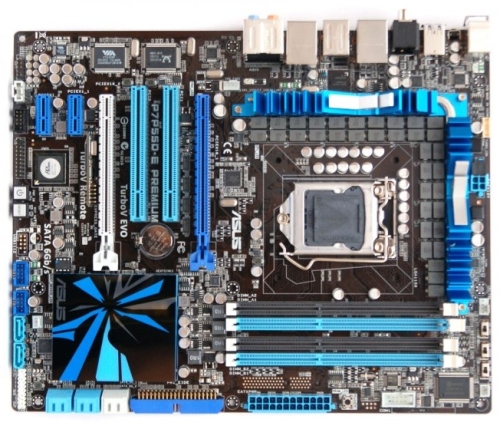
If the P7P55D-E Premium sounds familiar it's probably because it shares many parallels with the $280 P7P55D Premium, which only has SATA 6Gb/s. Alongside the third-generation SATA and USB ports, Asus' P7P55D-E Premium will feature support for Intel LGA 1156 processors, up to four DIMMs for a total of 16GB DDR3 2200MHz (OC) RAM, two PCI-E 2.0 x16, x1, and PCI slots with support for SLI as well as CrossFireX. Also integrated are a PATA host adapter, dual Gigabit Ethernet


Monday, October 26, 2009
Report: Intel Delaying Support for USB 3.0
Intel is pushing back support for USB 3.0 until 2011 claims a report.
 Last week EE Times reported that Intel Corp. has decided to delay its support for USB 3.0 until 2011. According to a "top tier" PC manufacturer who chose to remain nameless, Intel's hesitation will put mainstream adoption of the new USB standard on hold for at least a year. Intel originally planned to sample chipsets supporting USB 3.0 in early 2010, but now those plans have changed; Intel's PC technology manager even confirmed the report.
Last week EE Times reported that Intel Corp. has decided to delay its support for USB 3.0 until 2011. According to a "top tier" PC manufacturer who chose to remain nameless, Intel's hesitation will put mainstream adoption of the new USB standard on hold for at least a year. Intel originally planned to sample chipsets supporting USB 3.0 in early 2010, but now those plans have changed; Intel's PC technology manager even confirmed the report.
EE Times thus contacted a spokesperson from Intel and asked about the delay. The contact said the he didn't know anything about the supposed delay, and declined to comment any further on the subject. Currently Intel is focused on supporting the company's first processor architecture to use an integrated memory controller, Nehalem, and is also working on transitioning to the 5 GHz PCI Express 2.0 spec.
Still, that won't stop some companies from jumping onto the SuperSpeed USB bandwagon, releasing high-end consumer systems and graphic workstations... but not without a high cost. "It's hard to commit to an emerging technology like this when the key silicon enablers (meaning Intel) are not making it a priority," the source said. "You get into a chicken-and-egg situation."
EE Time's source also added that Intel needs to consider the "compelling needs" for USB 3.0 now versus 18 months later.
Source : Tom's Hardware US
 Last week EE Times reported that Intel Corp. has decided to delay its support for USB 3.0 until 2011. According to a "top tier" PC manufacturer who chose to remain nameless, Intel's hesitation will put mainstream adoption of the new USB standard on hold for at least a year. Intel originally planned to sample chipsets supporting USB 3.0 in early 2010, but now those plans have changed; Intel's PC technology manager even confirmed the report.
Last week EE Times reported that Intel Corp. has decided to delay its support for USB 3.0 until 2011. According to a "top tier" PC manufacturer who chose to remain nameless, Intel's hesitation will put mainstream adoption of the new USB standard on hold for at least a year. Intel originally planned to sample chipsets supporting USB 3.0 in early 2010, but now those plans have changed; Intel's PC technology manager even confirmed the report.EE Times thus contacted a spokesperson from Intel and asked about the delay. The contact said the he didn't know anything about the supposed delay, and declined to comment any further on the subject. Currently Intel is focused on supporting the company's first processor architecture to use an integrated memory controller, Nehalem, and is also working on transitioning to the 5 GHz PCI Express 2.0 spec.
Still, that won't stop some companies from jumping onto the SuperSpeed USB bandwagon, releasing high-end consumer systems and graphic workstations... but not without a high cost. "It's hard to commit to an emerging technology like this when the key silicon enablers (meaning Intel) are not making it a priority," the source said. "You get into a chicken-and-egg situation."
EE Time's source also added that Intel needs to consider the "compelling needs" for USB 3.0 now versus 18 months later.
Source : Tom's Hardware US
Acer's new monitor sports a contrast ratio of 8,000,000:1.
PCLaunches reports that Acer just shipped a super-slim, super-sharp 24-inch display in Japan for around $360. The monitor measures just 0.57-inches thick and offering an eye-piercing dynamic contrast ratio of up to 8,000,000:1 thanks to the white LED (WLED) backlighting. By using white LED technology, Acer's display can reproduce a wider color s-band at the higher saturation level.
In addition to its high contrast (which actually ranges from 1,000:1 to 8M:1), the display is somewhat green in nature, consuming only 17.2W of power, reducing consumption by 63-percent in relation to other 24-inch displays. Outside it 1080p resolution (1920 x 1080), the panel provides 250 cd/m2 brightness, 2 ms response time, a 160/170 degrees viewing angle, a single VGA jack, dual HDMI inputs, and an HDMI-to-DVI adapter.
The display itself is mounted on an L-shaped base with a matte metallic finish. The built-in 2W speaker is mounted into the rack monitor. It also uses an adaptive system for contrast control that ensures dynamic regulation of contrast level; each scene is analyzed and improved in color quality.
Although Acer hasn't revealed a North American release date, the Acer S243HL would certainly be ideal for intense PC gaming a Blu-ray movies in the den.
5 New Technologies That Will Change Everything
While sipping a cup of organically farmed, artisan-brewed tea, I tap on my gigabit-wireless-connected tablet, to pull up a 3D movie on the razor-thin HDTV hanging on the wall. A media server streams the film via a superspeedy USB connection to a wireless HD transmitter, which then beams it to the TV.
That actor--who was he? My augmented-reality contact lenses pick up the unique eye motion I make when I have a query, which I then enter on a virtual keyboard that appears in the space in front of me. Suddenly my field of vision is covered with a Web page showing a list of the actor's movies, along with some embedded video clips.
These technologies will come to life in the distant future, right? Future, yes. Distant, no.
Speed and content (much of it video) will be paired consistently across mobile, laptop, desktop, and home-entertainment systems. New ways of using video--including adding 3D depth or artificial visual overlays--will require more speed, storage, and computational power.
In our preview of technologies that are well on their way to reality, we look at the connective tissue of USB 3.0, 802.11ac, and 802.11ad for moving media--especially video--faster; at HTML5 for displaying video and content of all kinds consistently across all our devices; at augmented reality to see how the digital world will stretch into our physical reality by overlaying what we see with graphics and text; and at 3D TV, which will add image depth and believability to the experience of watching TV.
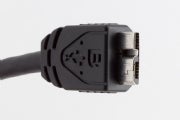
That actor--who was he? My augmented-reality contact lenses pick up the unique eye motion I make when I have a query, which I then enter on a virtual keyboard that appears in the space in front of me. Suddenly my field of vision is covered with a Web page showing a list of the actor's movies, along with some embedded video clips.
These technologies will come to life in the distant future, right? Future, yes. Distant, no.
Speed and content (much of it video) will be paired consistently across mobile, laptop, desktop, and home-entertainment systems. New ways of using video--including adding 3D depth or artificial visual overlays--will require more speed, storage, and computational power.
In our preview of technologies that are well on their way to reality, we look at the connective tissue of USB 3.0, 802.11ac, and 802.11ad for moving media--especially video--faster; at HTML5 for displaying video and content of all kinds consistently across all our devices; at augmented reality to see how the digital world will stretch into our physical reality by overlaying what we see with graphics and text; and at 3D TV, which will add image depth and believability to the experience of watching TV.
USB 3.0

The new USB 3.0 standard preserves backward compatibility by allowing older cables to plug into newer jacks; but newer cables like this one have extra pins that boost the data rate to 4.8 gbps.
Before you leave work, you need to back up your computer. You push a button, and 5 minutes later, while you're still packing up, your system has dumped 150GB of data onto an encrypted 512GB superfast solid-state drive, which you eject to take with you for offsite backup. On your way home, you stop at a movie kiosk outside a fast-food restaurant and buy a feature-length 3D video download on sale. You plug in your drive, the kiosk reads your credentials, and while you watch a 90-second preview of coming attractions, the 30GB video transfers onto your SSD. You pull out the drive and head home.
Does Turbo Boost Help Or Hurt Core i5/i7's Power Efficiency?
Intel’s new LGA 1156-based processors, namely the Core i5-700- and Core i7-800-series, arrived with a bang. Our launch article by Chris Angelini provides all the key information. But, in short, the new processor delivers increased performance compared to Core 2 Quad. No surprise there. But Intel also claims that power consumption went down significantly, so we decided to tackle this prospect with a closer look.
The Core i5 Innovation
The new P55 platform and Intel’s Lynnfield processors make a are impressive enough from a performance angle, but I’d like to look at the facts from a different perspective. The platform’s foundation still centers on the Nehalem architecture first seen as Core i7 for LGA 1366 late last year, hence the level of innovation in Lynnfield is less revolutionary and more of an evolution.
Intel is great at tweaking, though. From a technology standpoint, Core i5 incorporates a lot more integration, stepping closer to the inevitable SoC (system-on-chip) future by adding PCI Express onto the die. A more aggressive implementation of Turbo Boost adds extra performance for non-threaded applications. Considering that Intel plans to integrate graphics with Clarkdale in coming months, this step could also be looked at as a necessity. Improved Turbo Boost is another building block for turning dynamic overclocking into a real feature. In reality, though, the large motherboard makers have been offering similar features for a few years already.
I see two main benefits of the new LGA 1156 processors for buyers. First, you have decreased power consumption thanks to the integrated memory controller and PCI Express 2.0 interface. The second benefit is performance. Turbo Boost helps to elevate LGA 1156-based parts to Core i7-900-class performance levels in certain applications. Both benefits became obvious in our article, Intel’s Mainstream Magnum Opus.
Subscribe to:
Posts (Atom)














